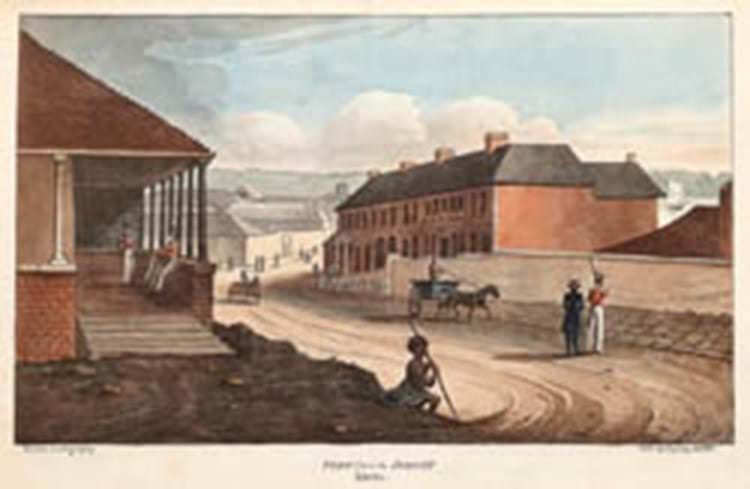
Scantily catalogued, they were consigned via a regional valuation office and, with a pre-sale estimate of just £200-300, they sparked interest from Australia as five phone bidders competed before they were knocked down to an anonymous buyer at £26,000.
Although he exhibited at the Royal Academy at a precocious 13 years old, Augustus Earle is best known today as the first professionally trained artist to visit five continents.
Before ill health forced him to return to London in 1829, he had been beyond the Americas and Australasia - an odyssey that included six months shipwrecked on Tristan da Cunha, the world's most remote island, where he occupied himself painting sombre ethnographic studies, and a period of residence in New Zealand where he made important records of traditional Maori art and culture.
An unrelenting explorer, Earle even secured a position on board the Beagle in 1831 with Charles Darwin, a post later assumed by Conrad Martens (1801-1878), who would become Austrialia's most prolific landscape painter.
Earle himself had landed in Sydney in 1825 (only 37 years after the First Fleet) and quickly established himself as the colony's leading artist, operating a gallery at 10 George Street offering painting lessons, materials and his own pictures for sale. It was here, with the aid of a lithographic press given to him by the astronomer James Dunlop, that he produced four scenes of the local topography over two months in 1826.
Together the four prints encountered in Oxford, each inscribed Earle's Lithography Pubd at Sydney, NSW to the mounts, provide a detailed first-hand account of the colony in its first 50 years.
Sydney Lighthouse depicts Australia's first lighthouse, the Macquarie Lighthouse, built only eight years earlier in 1818 on the cliffs of Vaucluse by convict architect Francis Greenway, whileSydney Head depicts the entrance to Port Jackson from the viewpoint of Middle Head. Spring Cove, on the Western side of the headland, was used as the quarantine base for new arrivals to the colony in the late 1820s. The South Head, now houses the Royal Australian Navy training base, while Sydney Harbour National Park blankets the North Head.
View from the Sydney Hotel describes the colony and its inhabitants beyond the coastline. White settlers go about their daily business whilst a solitary Aboriginal man with a pleasant smile peers directly at the viewer. The central positioning and inclusion of the native illustrates their co-existence with the residents in the early years and represents the artist's own curiosity about indigenous peoples.
Sydney, From Pinchgut Island, refers to a punishment site, named 'Pinchgut' after the starvation rations the convicts endured there.
By the 1840s the threat of attack from France and America led to a review of the defences of the inner harbour and the small island was converted into Fort Denison using 8000 tonnes of sandstone.
Interestingly this composition is almost identical to Coming to Anchor off Sydney Cove, a lithograph produced by Joseph Cross of Holborn in 1830 after Earl had returned to London.
There are examples of all these prints in the major Australian national collections but it seems a long time since a set appeared at auction.
By Marika Clemow




